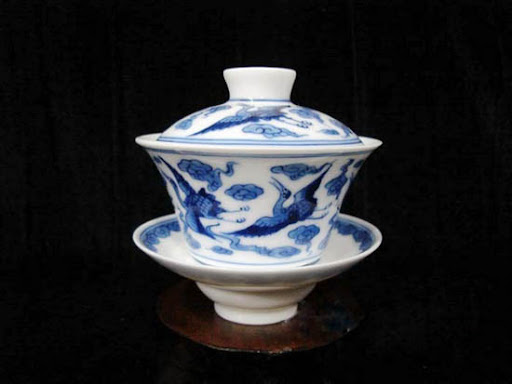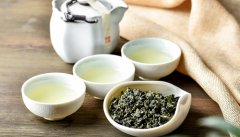What are the differences between capping bowls and teapots? Is it better to make tea with a lid bowl or a teapot?
It is not only suitable for beginners but also not suitable for beginners. Everyone who drinks tea should have one. Maybe this is an attractive ceremony, and we, as tea people, yearn for it so much. It is a model of "simple art". Compared with collectors' tea bowls and unglazed pottery pots, gaiwan is a common appliance. It depends neither on thin clay nor on ancient kilns-what is simple and striking is itself. The Ming Dynasty abolished the tea bowl (tea bowl) of our ancestors, and "paper" thin porcelain cups became a way to drink tea. Too hot to keep as usual, these soft dishes are supposed to be lifted from their cooled edges-and so are the lid bowls. The cover bowl was originally used for drinking, but the purpose of the cover is only to prevent leaves from getting into your mouth. "they should be as thin and flawless as eggshells," Blofeld said in his book Chinese Tea Art. "they will sound like a bell and shine like a mirror at the slightest click." The lofty neutrality of porcelain, which is a perfect blank canvas in color and material, makes it widely praised in the field of unseasoned and unfinished teapots that "focus on one style". People can open the lid of the pot and smell the tea in real time. You can stir. You can dip the white lid in contrast to the glowing liquid inside. Cover the bowl to encourage you to use your senses-with all your consciousness-to make tea. Watch the steam dance carefully. See the leaves-- almost imperceptibly-- begin to unfold. Watching the color deepen. Lift the lid under your chin and let the volatiles evaporate to your nose. Breathe slowly-the softer and deeper you inhale, the more rhythmically and calmly you breathe, the more you will understand its characteristics. So much tea has nothing to do with taste.

Pour water into the lid bowl, which is made of silicate ceramic and has a good balance of heat transfer throughout the container. Gaiwan is actually better at heat dissipation than any other container. The huge temperature drop that occurs when brewing with a "covered bowl" is one of the many self-balancing elements of the container. Volatiles take time to simmer so that they can be extracted properly. Tannins should not be overcooked because there are too many leaves or too long in boiling hot containers-they should be extracted in balance to make a cup of tea stable and delicious. For the layman, "gaiwan" is a great first step towards a better tea ceremony. Except for the basic dish shape, there is no extra part of Gaiwan. It reduces tea to the most basic elements: a bowl for water and tea, and a lid for filtering tea. In some great versions of the bowl, the lid comfortably wedges itself into a corner of the bowl and base, leaning against the mouth of the bowl like sepals to petals. * from the original intention, it refers to the "tea-making era" that began after the demise of the Song Dynasty. Some people might say that tea bowls are simpler in nature. The difference between a covered bowl and a standard teapot there is an endless treasure trove of kung fu online. For these purposes, we will no longer discuss kung fu, a ritual style with a rich cultural history and countless utensils and backgrounds to appreciate. Here, we simply talk about Gaiwan and making tea in it. Our standard beer, faithful to its French press and the predecessor of the English teapot, put tea in a lot of water for a long time. During the injection process, double-layer borosilicate glass captures and retains heat like a convection oven, allowing a strong baking heat concentration consistent with the temperature. "gaiwan" puts the tea (maybe even the same amount) into a small amount of water for a short brew, and with continuous brewing, users can slowly appreciate the character of the tea. Unlike standard beer, paper-thin porcelain dissipates heat quickly, making its landing milder. It is not recommended to forget the soaking time of standard beer! However, depending on your dose, capping the bowl is quite forgiving. I hope this will help clarify the difference between a standard teapot and a lid bowl. Although the Standard Cup offers a more modern drink (12 ounces) for you to enjoy while flipping through the sofa, capping the cup will make you notice the taste of the tea. As I said before, some of our limited black tea, sometimes standard teapots are actually more suitable. This is not to say that you cannot make tea in a standard teapot with rigor or consciousness. They are different blood vessels for different reasons.
Important Notice :
前街咖啡 FrontStreet Coffee has moved to new addredd:
FrontStreet Coffee Address: 315,Donghua East Road,GuangZhou
Tel:020 38364473
- Prev

The quality characteristics of tea depend on what factors are there? what are the natural reasons for good tea quality?
Tea tasting can determine the method scientifically and step by step. Let's divide the ingredients of good tea into five categories. 1. Raw tea and tea varieties suitable for production and the growth stage of tea determine the most suitable types of tea for production. From the top, different varieties of tea have different tastes and aromas. Each variety has different water.
- Next

What kind of oolong tea is Tieguanyin? What's the difference between Tieguanyin tea and red oolong tea?
I personally think the biggest differences between Tieguanyin and Red Oolong are as follows: 1. The sweetness of red oolong is like honey, and the sweetness of Tieguanyin is more like roasted nut cocoa. two。 The fermentation degree of red oolong is higher than that of Tieguanyin, which is manifested in the ripe fruit flavor. And the brown color is closer to black tea. 3. Red oolong does not show sour taste. This is similar to the way of making tea.
Related
- The milk tea cup becomes smaller?! Overlord Tea Girl launches a new "Return to Yunnan" series
- Accused of selling counterfeit and high-priced coffee beans! Well-known boutique coffee brand "Oukelao" bowed and apologized!
- How to make espresso dumplings? Can I eat coffee and glutinous rice balls together?
- Save the unformed and stagnant powder cakes in one second! What is the problem with stagnant water in the powder bowl of the espresso machine?
- What does hand-brewed coffee stop mean? Why is it not recommended to make coffee by hand?
- Is it normal to smell like coffee? Why does coffee smell like alcohol? What's wrong with the strong smell of cold extract ice dripping ice brewed coffee?
- How to solve the problem that hand-brewed coffee extraction takes too long? Why is the water flowing so slowly when making coffee?
- The main points of making Australian white coffee, the proportion details, how does Australian white properly foam and blend the flowers?
- Can ice water make cold extract coffee? What is the difference between room temperature water and ice water for making cold coffee?
- What milk is best for making latte and white Dirty coffee? What is the difference between different brands of fresh milk and pure milk for making coffee?

